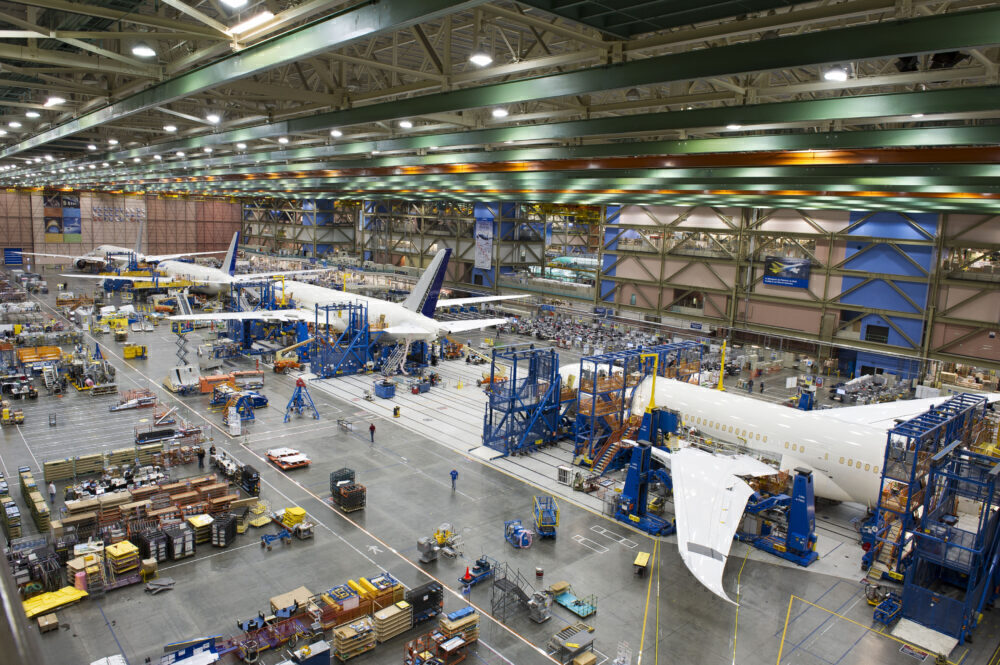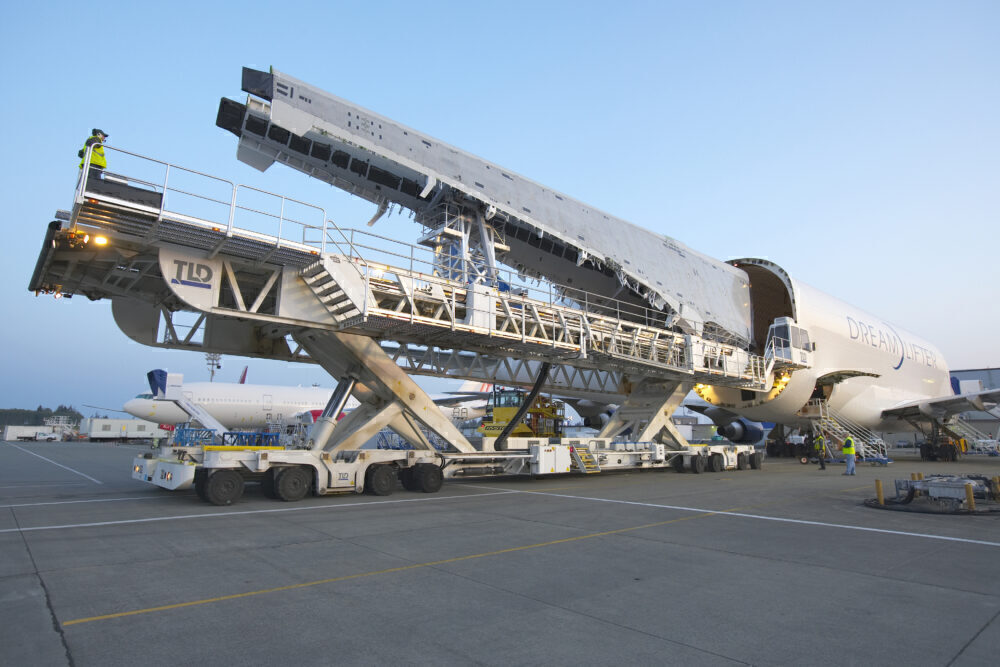The 787 is a great aircraft and has been a success for Boeing and operating airlines. Launching a new clean-sheet aircraft to follow the incredibly successful 777 was a bold move for Boeing. But doing so brought in a new era of composite construction and efficient operation that Airbus has had to catch up with.

Moving on from the 777
Boeing had great success with the 777. It first flew in 1994 and has gone on to be the most sold widebody aircraft to date. However, Boeing was soon considering its next development and chose to move in a different direction. It set its focus on improving efficiency and lowering operating costs for airlines.
This was a bold move at the time. Airbus was also looking at its future aircraft plans and was developing the A380 as the largest passenger jet to date. This was based on confidence in the growth of high-capacity routes and hub-based operations. Boeing had the 747, of course, to compete with this, but Airbus would be far ahead in capacity with the new A380.
Stay informed: Sign up for our daily and weekly aviation news digests.
Focus on efficiency
The 787 project, first launched as the 7E7 in January 2003, focussed on developing a new, clean sheer aircraft with a 200-300 capacity range. It aimed to offer around a 20% efficiency improvement over the similar-sized 767. The clean-sheet design that led to this included:
- Use of composite materials. The 787 was the first major commercial aircraft to use carbon fiber composite components in the fuselage and wing construction. This makes the aircraft lighter but still offers high strength. It offers a 20% weight reduction compared to conventional construction (according to Boeing). It also reduces the required maintenance of the fuselage due to fatigue and corrosion.
- More efficient engines. The General Electric GEnx or the Rolls-Royce Trent 1000 engine provides around 40% of the efficiency improvement.
- Aerodynamic upgrades include raked wingtips to reduce vortex drag.

Changes to variants
The 787 was originally conceived with three different variants. The 787-8 was the first to enter service in December 2009 and the larger 787-9 in September 2013. The 787-3 was part of the launch line-up and would feature the same sized fuselage as the 787-8 but increased capacity. Airbus dropped the variant in 2010 with limited interest and program delays.
The larger 787-10 followed later. This took typical capacity up to 330 (from 290 for the 787-9) and was better able to compete with A350-900 in this respect.

Going forward, there has also been discussion about the possible return of the 787-3. As Boeing revisits its plans for a mid-market NMA (New Midsize Aircraft), one potential option would be to revisit the 787-3 rather than develop a further clean-sheet design.
Global construction
The clean-sheet design of the 787 brought with it a different approach to construction for Boeing. It introduced more spread-out production, with suppliers in several countries and two US production lines. It was originally assembled at Boeing’s Everett facility (along with all other Boeing widebodies).

But a second assembly line was added at North Charleston, South Carolina, in 2011 to handle the increased production rate. The 787-10 was only produced in Charleston, and following the slowdown in production, Boeing is currently moving all 787 production there. The last 787 at Everett was completed in February 2021.

But components are constructed in several locations in the US globally. For example, the 787’s wings and central wing box are produced by Mitsubishi Heavy Industries, Japan. And fuselage sections are built by Kawasaki Heavy Industries, Japan, and Alenia Aeronautica, Italy. Boeing introduced the Dreamlifter fuselage transport aircraft (based on a modified 747-400) to facilitate the transport of these components to the final assembly lines.

Airbus followed with the A350XWB
A good way to appreciate the success of Boeing’s decisions for the 787 focus and its efficient, clean-sheet design is to look at how it affected Airbus’s plans. Airbus’s attention at the time was on the development, and sales, of the A380. It was also developing its lower capacity widebody offering, but this was not originally planned to be a new clean-sheet design.
Before the launch (and success) of the Boeing 787, Airbus had been planning a new mid-capacity widebody based on the A330. However, it changed this to a clean-sheet design to take advantage of similar efficiency improvements as the 787. The new A350XWB was announced at the Farnborough Air Show in 2006 – likewise with a composite fuselage design and new, more efficient engines.

This late decision lost ground to Boeing. The A350XWB did not enter service until 2015 (with Qatar Airways), four years after the Boeing 787. The 787 remains ahead in deliveries. By May 2021, Boeing had delivered 1,003 787s, and there were still 486 unfilled orders. Airbus, in comparison, has delivered 422 A350 aircraft (and there are 491 still to be delivered).
The 787 has been a great success for Boeing and started a new era in efficient design and lower emissions. Feel free to discuss its highs and lows further in the comments.
from Simple Flying https://ift.tt/3p4DB5G
via IFTTT
Comments
Post a Comment